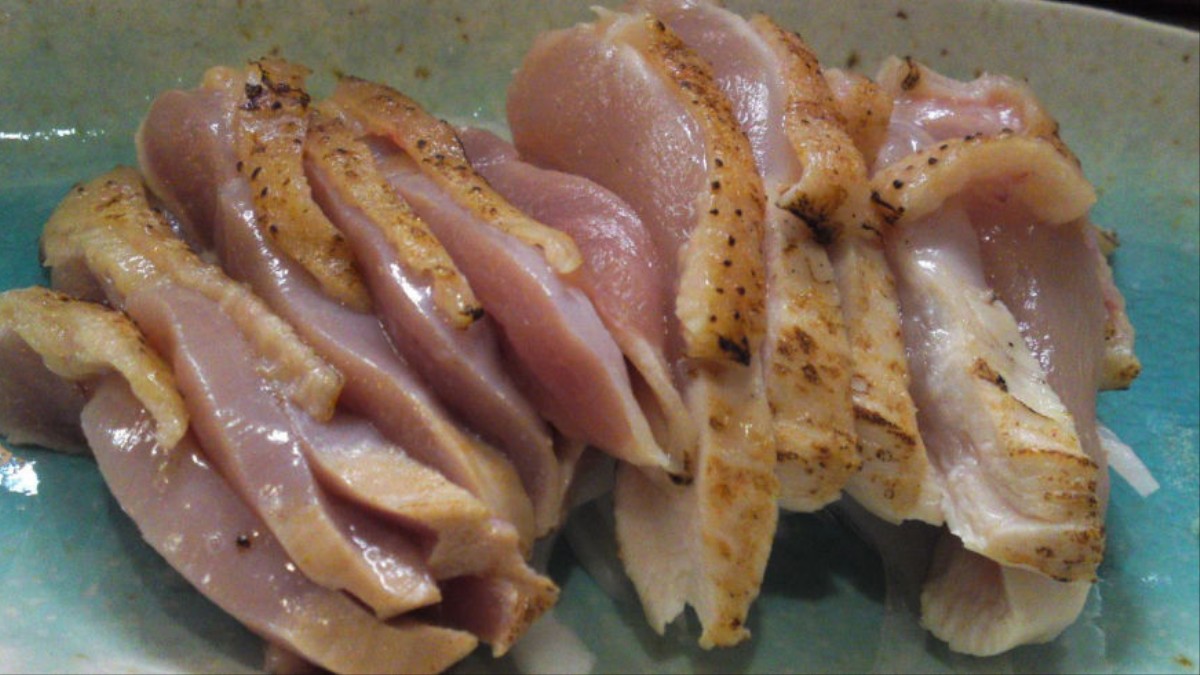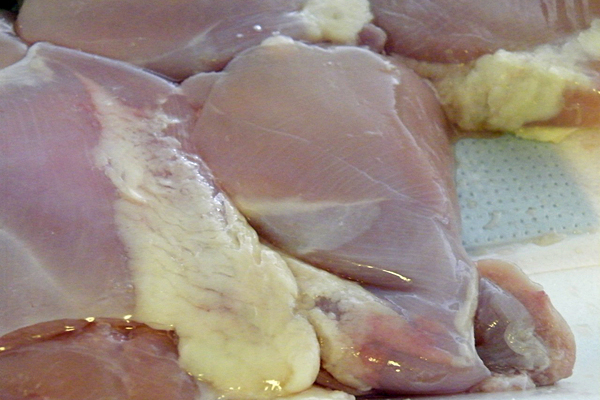
Raw chicken on the other hand is more likely to have Salmonella on. According to USDA FDA and CDC 90 of Salmonella illness are attributed to sources other than chicken.

The birds intestinal content may get on the chicken meat processing equipment floor and storage bins.
How likely is it to get salmonella from raw chicken. It is possible but. Still unlikelynot all raw chicken is contaminated with Salmonella. Although obviously you wouldnt be doing that on purpose and taking the chance.
Repeated surveys have shown that between 4070 of raw cut poultry purchased from supermarkets and butchers shops contain Salmonella organisms. How likely is it that a single bite of raw chicken would allow you to become infected and experience a salmonellosis. Chicken can be a nutritious choice but raw chicken is often contaminated with Campylobacter bacteria and sometimes with Salmonella and Clostridium perfringens bacteria.
If you eat undercooked chicken or other foods or beverages contaminated by raw chicken or its juices you can get a foodborne illness which is also called food poisoning. When someone says salmonella you most likely immediately think uncooked eggs or poultry and you would be right although it can be contracted from eating contaminated garden produce as well. Salmonella IS most often contracted from un- or under-cooked poultry products and in fact it is estimated that 1 in 20000 eggs contain Salmonella.
4 years ago edited 4 years ago. Actually if kept at 150F for around 5 mins 999999 of salmonella if there was any to begin with which is very likelywould be eliminated. The only reason 165 is the recommendation is because at 165 salmonella cant even survive one second.
All chickens have salmonella growing in the gastrointestinal tract. Unless there is some kind of stress the numbers are kept in balance and there will be no salmonellosis. Raw poultry properly processed and handled hygienically should not have.
But when you pool raw eggs then one contaminated egg can contaminate a lot of raw egg products. Raw chicken on the other hand is more likely to have Salmonella on. The symptoms of salmonella food poisoning often come on quickly usually within 8 to 72 hours after consuming contaminated food or water.
Cook raw meat to a safe temperature. An internal temperature of 165 degrees F will kill salmonella in chicken. To accurately measure the internal temperature insert the meat thermometer into the thickest area of the chicken or if cooking a whole chicken into the inner thigh near the breast.
In the case of campylobacter symptoms dont typically start to present themselves until two to five days after exposure while salmonella can start wreaking havoc in as little as six hours per. On average about 5 percent of chicken tests positive for salmonella according to Russell who suggested that chicken on grocery store shelves would reflect the same percentage. Good Morning America tested 100 packages and found that for packages of chicken parts 20.
Other than the mucosal lining of the humans intestine Salmonella can invade the mucosa of a hens ovary and intestine making it safe to assume that the actual problem can be originated from the way the chicken was raised how their food was given how they were taken care of. However its still difficult to determine in which level do the Salmonella started to affect the production of a healthy. So while you will be exposed to salmonella from only 136 of your hypothetical raw chicken meals you will be ingesting pathogens with each of them.
You wont fall ill every time you do it but its highly unlikely that it will be zero times either. Salmonella Can Be Passed from Mom to Chick. If a laying hen has Salmonella her eggs and the chicks inside them may also have it.
In one study 90 of chicks who contacted the Salmonella bacteria during incubation tested positive for the bacteria after hatching. 985 of USDA tests for Salmonella on whole chickens at large plants are negative. Over the past 5 years we have reduced Salmonella on whole chickens by 66.
According to USDA FDA and CDC 90 of Salmonella illness are attributed to sources other than chicken. Food poisoning typically comes from eating raw or contaminated foods and Salmonella in particular is famously associated with raw chicken. But is Salmonella contagious and can you actually get.
Pressure on wound. Put a small bandaid on it and if is still bleeding in the morning then see your doctorIf it is bleeding a lot then go to the er to get it to stopCover it with pressure and keep pressure for at least 20 minutes then keep bandaid and slowly remove it gently more pressure should get the bleeding to stop. Salmonella is potentially on the surface of all raw chicken.
The bacteria live in the intestines of animals and are excreted in feces. Chicken can become contaminated where its slaughtered and processed. The birds intestinal content may get on the chicken meat processing equipment floor and storage bins.